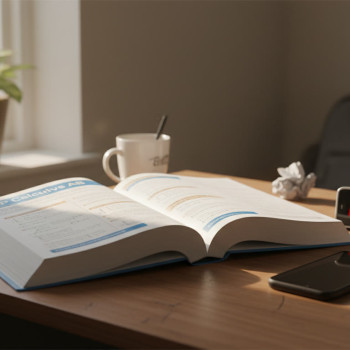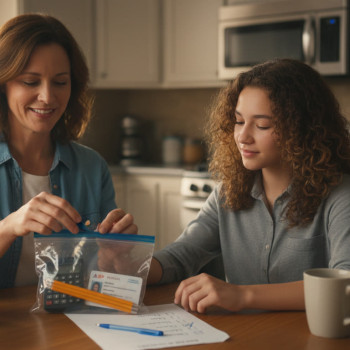Why the $99 Number Isn’t the Whole Story
When families first hear about AP exams, the obvious number that jumps out is the exam fee: the base price charged per AP test. But if you’re a parent who’s been through high school testing season once — or if you’re preparing for the first time — you already sense there’s more under the surface. Between getting to the test site, printing practice materials, packing snacks for a long morning, and buying last-minute stationery, the little extras add up fast.

What “Hidden Costs” Means for Families
Hidden costs are those predictable-but-easily-overlooked expenses that fall outside the official exam invoice. They are rarely dramatic on their own — a few dollars for a new pencil, a $10 ride-share to the school — but multiply that by multiple exams, tutoring sessions, and sometimes multiple students, and you’ll see a real line item in your household budget.
Understanding and planning for these costs turns stress into strategy. Below, we break down the categories, give typical numbers and examples, and offer practical ways to minimize the financial and emotional drain.
Line-By-Line: The Most Common Hidden Costs
Here’s a realistic list of categories parents often forget to budget for — each followed by a short explanation and an example.
1. Travel and Transportation
Not all students take their AP exam at their home high school. Some districts consolidate testing at central locations, and some students travel for late testing or to access a specific subject exam. Costs include gas, public transit fares, parking, tolls, and ride-share or taxi fares for last-mile challenges.
- Typical cost range: $0 (walk or school bus) to $60+ (ride-share, out-of-town travel).
- Example: A suburban family pays $12 round-trip for gas plus $6 parking for each exam. For three exams, that’s $54 total.
2. Meals and Snacks
Test days are long. Students arrive early, wait, take the exam, and might not get a proper meal until later. Many parents pack sandwiches, bottled water, and snacks; others buy food near the testing site. Hunger and dehydration can affect concentration, so this is one cost you don’t want to skip.
- Typical cost range: $3–$15 per test for snacks/packed lunch; $7–$20 per person if buying food near the venue.
- Tip: Packing nutrient-dense snacks (protein bars, fruit, nuts) is cheaper and usually healthier than fast food.
3. Printing and Photocopying
Even in an increasingly digital world, many students and tutors still rely on printed practice tests, annotated notes, timelines, and formula sheets. Printing at home is inexpensive but adds up — ink cartridges are costly — and printing at a local shop or school can have per-page fees.
- Typical cost range: $0.05–$0.25 per black-and-white page; $0.50–$2.00 per color page.
- Example: A full-length AP practice exam may be 40–60 pages. Printing two practice tests and a packet of review sheets could cost $10–$30 if done at a commercial printer.
4. Stationery and Exam-Day Supplies
AP exams require certain allowed materials (e.g., pencils for multiple-choice sections, pens for free-response where allowed, rulers, calculators for certain tests). Students also like to have extras on hand: a fresh pencil sharpener, sticky tabs, highlighters for last-minute review, and a bottle of water.
- Typical cost range: $5–$30 per student for replenishing supplies throughout the season.
- Pro tip: Many families assemble an “AP Day Kit” — reusable across exams — to control cumulative spending.
5. Printing: Test Transcripts, Score Reports, and College Deliverables
While the free score send option covers initial college sends by a deadline, many families later decide to send additional score reports or need printed copies for school counselors, scholarship applications, or their own records. Each extra official score report typically has a fee.
- Typical cost for additional score reports: modest one-time fee (varies by year and policy).
- Consider timing: use free sends wisely to avoid later fees.
6. Tutoring, Test Prep, and Last-Minute Practice Resources
Some families invest in extra tutoring shortly before the exam for specific weaknesses — a brisk way to boost confidence, but it’s another cost to consider. Personalized 1-on-1 tutoring, tailored study plans, and guided practice can have a significant impact; the smart question is: how to maximize return on that investment?
- Typical cost range: Varies widely. Group review classes are cheaper per hour; 1-on-1 expert tutoring costs more but is more targeted.
- Example: A six-week focused tutoring package with targeted practice might cost less overall than repeated low-value group sessions if it fixes a precise gap quickly.
A Practical Cost Table: Estimating a Single Student’s AP Season
Below is an illustrative table to help you estimate a realistic budget. Numbers are estimates designed to be conservative and practical for planning.
| Item | Per-Exam or One-Time | Estimated Cost (USD) | Notes |
|---|---|---|---|
| AP Exam Fee (base) | Per exam | $99 | Standard on-time exam fee charged per test in the U.S. |
| Travel (gas/parking/ride) | Per exam | $10–$40 | Depends on distance and parking/ride-share needs |
| Meals / Snacks | Per exam | $5–$15 | Pack food to save money |
| Printing (practice tests) | One-time | $10–$30 | Two to four full-length practice tests plus notes |
| Stationery / Supplies | One-time | $8–$25 | Pencils, erasers, ruler, calculator batteries |
| Optional 1-on-1 Tutoring | One-time (package) | $150–$800+ | Highly variable; investment in targeted sessions can pay off |
| Extra Score Reports | Per report | $0–$15 | Use free score sends by deadline to reduce this cost |
Putting It Together: Example Budgets
Let’s do two quick scenarios to make the math concrete.
- Conservative Prep, 2 exams: Exam fees ($198) + travel ($20) + snacks ($10) + printing ($15) + supplies ($10) = $253.
- High-Support Prep, 3 exams + tutoring: Exam fees ($297) + travel ($60) + snacks ($30) + printing ($25) + supplies ($20) + tutoring ($400) = $832.
Both scenarios assume on-time exam orders and no late fees. If you factor in late orders, cancellations, or out-of-state testing, add those line items on top.
Smart Ways to Reduce Hidden Costs
Good news: many of these expenses are manageable with a little advance planning. Here are practical steps parents can take now.
1. Plan Logistics Early
Know where the exam is happening, what time doors open, and whether your child has to arrange transportation. Confirm park-and-drop rules and whether the school provides buses for off-site testing. When travel is predictable, families can carpool or coordinate with neighbors to share costs.
2. Pack a Cost-Effective Exam Kit
Create a reusable kit with sharpened pencils, an approved calculator (with fresh batteries), extra erasers, a refillable water bottle, and a compact snack. One kit can serve across multiple exams and even siblings.
3. Use Free or Low-Cost Practice Resources Wisely
Not every practice resource needs to be printed. Encourage digital practice for some mock exams, and only print selected tests for timed, paper-based simulation. Libraries, school printers, or community centers sometimes offer low-cost printing.
4. Time-Aware Tutoring: Targeted Over Time-Heavy
Rather than purchasing blanket tutoring hours, choose targeted sessions focused on a single weakness. For example: one focused session to master a specific FRQ type can be far more cost-effective than weekly broad review sessions. Personalized tutoring — like Sparkl’s 1-on-1 guidance with tailored study plans and expert tutors — can help your child get high-impact help when it matters most without unnecessary hours that inflate costs.
5. Use Free Score Sends and Deadlines Strategically
Most students get to send their AP scores to colleges for free if they designate them by the deadline. Planning which colleges to send to and when will prevent later score-report fees.
When Extra Spending Makes Sense
Not all extra costs are wasteful. Sometimes spending a little more up front can improve outcomes and reduce stress — which is a huge benefit in high-stakes seasons.
Paid Tutoring for Strategic Gains
If your student is only a few points away from a higher AP score — and that score could translate into college credit, scholarship differentiation, or placement into a higher-level class — a short, targeted tutoring burst is often worth the investment. Personalized tutors can offer focused practice, mock FRQs under timed conditions, and feedback tuned to College Board rubrics.
Comfort on Exam Day
Investing in a calm morning routine — a reliable breakfast, a quiet ride to the testing site — supports performance. Compared to the potential stress of logistical chaos, these are inexpensive insurance policies.
Practical Checklist: Prepare Your AP Budget
Use this checklist as a planning tool with estimated costs you can customize for your family.
- List exams the student will take and multiply by the base fee.
- Estimate travel costs (gas, parking, ride-share) per exam and total.
- Decide on a printing budget for practice exams and study packets.
- Create a supplies list and buy a reusable kit.
- Decide whether targeted tutoring is needed and budget for a short package.
- Factor in extra score reports or late fees as a contingency (10–15% buffer).
Real-Life Example: The Ramirez Family
Maria Ramirez has two kids — one junior planning to take AP US History and AP Calculus AB, and a senior retaking AP Chemistry for a better score. Initially, the family’s spreadsheet only included exam fees (3 × $99), but after mapping the season they added predictable costs: gas for three separate test days, $25 for printing practice materials, five tutoring sessions for the senior to focus on FRQs and lab-related concepts, and a modest budget for snacks and batteries.
By planning, they avoided a last-minute $40 late order fee (because they hit the ordering deadline), kept printing costs under $20 by choosing to print only two full-length tests and using digital practice for the rest, and used two targeted sessions with a qualified tutor to address the senior’s specific weakness — helping that student raise the needed point on the free-response section. The result: less stress, fewer surprises, and a clearer sense of the return on their spending.
How to Talk About Costs with Your Teen
Money talk with teens can be sensitive, but framing the conversation around partnership and shared goals makes it productive.
- Explain the full budget and invite them to help prioritize where to spend (for example, tutoring vs. extra practice tests).
- Set expectations about what you can afford and where they might contribute (e.g., choosing to print fewer pages, or taking public transit).
- Discuss the purpose of each cost: some are performance-focused (tutoring, quality sleep), others are logistical (transportation).
Reducing Stress Without Cutting Value
Cutting costs doesn’t mean cutting support. Often, thoughtful decisions preserve value while trimming unnecessary spending.
- Prioritize targeted help that addresses specific weaknesses rather than adding more hours indiscriminately.
- Use a mix of free digital resources and selective printed materials for high-fidelity practice.
- Coordinate with your student’s AP coordinator and other families to share resources, carpool, or print bulk materials at lower cost.
When Personalized Support Is Worth It
One of the best ways parents can mitigate both the hidden costs and the anxiety of AP season is to choose smart, personalized support — not just more support. Personalized tutoring offers three benefits that control costs indirectly:
- Precision: 1-on-1 guidance targets the exact gaps in knowledge rather than broad review.
- Efficiency: Tailored study plans save time and avoid redundant practice — reducing printing and extra sessions.
- Confidence: Students who feel prepared are less likely to seek last-minute costly solutions.
For example, a short series of sessions with an expert tutor who knows AP rubrics, combined with an individualized study schedule and data-driven feedback, can often deliver score improvement with fewer total hours than generic tutoring. That’s why families sometimes find services offering personalized tutoring and AI-driven insights — like Sparkl’s personalized tutoring and tailored study plans — to be cost-effective. When those services are used intentionally, they can reduce the need for last-minute expenses and minimize test-day stress.
Final Checklist Before Exam Season
Use this short checklist two weeks before the first AP exam:
- Confirm exam dates, times, and locations with the school’s AP coordinator.
- Check transportation plans and parking — do a test run if the site is unfamiliar.
- Assemble and label an AP Day Kit for the student.
- Decide on printing needs and set a cap (for example, print only two full-length practice tests).
- If budgeting tutoring, schedule sessions at least one to two weeks before the exam for maximum impact.
- Confirm any fee reduction eligibility and free score send decisions with your counselor.

Parting Thought: Small Planning, Big Savings
AP exams are about opportunity — credit, placement, and college readiness. But they’re also a season with many small decisions that can either cascade into stress and unexpected costs or be managed with calm, practical planning. By accounting for travel, meals, printing, stationery, and the strategic use of tutoring, you turn exam season from a surprise-laden sprint into a well-organized phase. That saves money, preserves focus, and protects your teen’s confidence.
If you want, start by building your family’s AP budget tonight: list the exams, add the base fees, and then walk through the hidden costs outlined above. In doing so, you’ll see where a targeted investment in personalized support — like 1-on-1 guidance and tailored study plans — can actually reduce your overall spend while boosting outcomes. That’s the rare win-win in test prep: better results, less waste, and more peace of mind.
Need a Hand Planning?
If you’d like help turning these numbers into a concrete budget or an efficient, personalized prep plan for your child, consider exploring options for focused tutoring and study plans. The right guidance can make exam season smoother and more cost-effective — and that’s worth every pencil and packed snack.


















No Comments
Leave a comment Cancel